Welcome to our exploration of the future of self-driving cars and the role of artificial intelligence in revolutionizing the transportation industry. With the development of self-driving technology and AI-powered systems, we are witnessing a significant shift in the way we think about transportation. Self-driving cars have the potential to improve safety, efficiency, and accessibility, making travel easier and more convenient than ever before.
In this section, we will delve into the rise of autonomous vehicles and the technology that powers them. We will also explore the various ways in which AI is transforming transportation, from navigation and traffic management to vehicle performance. Join us as we explore the exciting future of self-driving cars and the impact of AI on transportation.
Key Takeaways:
- The future of self-driving cars is reliant on advancements in artificial intelligence.
- Self-driving cars have the potential to improve safety, efficiency, and accessibility in transportation.
- AI-powered systems and algorithms are transforming various aspects of transportation, including navigation, traffic management, and vehicle performance.
The Rise of Autonomous Vehicles
Autonomous vehicles, commonly referred to as self-driving cars, are quickly becoming a prominent feature on our roads. With the potential to revolutionize the future of transportation, these vehicles represent a significant shift in the way we move from place to place.
The technology driving autonomous vehicles has been advancing rapidly, with major automotive manufacturers investing heavily in research and development. The goal is to create a fully autonomous vehicle capable of navigating any road safely and efficiently. This technology has the potential to transform the way we travel, making it safer, more efficient, and ultimately more convenient.
One of the key advantages of autonomous vehicles is the potential to reduce accidents on our roads. Current statistics show that a large number of accidents are caused by human error, with distracted driving, drunk driving, and speeding being among the leading causes. Autonomous vehicles, on the other hand, have the ability to scan their surroundings and make decisions based on real-time data, reducing the risk of accidents caused by driver error.
Another benefit of autonomous vehicles is the potential to improve traffic flow. With more efficient routing and fewer accidents, traffic congestion could be significantly reduced, resulting in shorter commute times and less time spent on the road. This would ultimately lead to a more productive and less stressful transportation experience for everyone.
Finally, autonomous vehicles could also improve accessibility for those who are unable to drive due to disability, age, or other factors. With self-driving technology, these individuals would have increased independence and mobility, improving their quality of life and allowing them to participate more actively in their communities.
As the technology behind autonomous vehicles continues to advance, we can expect to see a significant shift in the way we think about transportation. From improving safety and reducing traffic congestion to increasing accessibility for all, the future of autonomous vehicles is full of promise and potential.
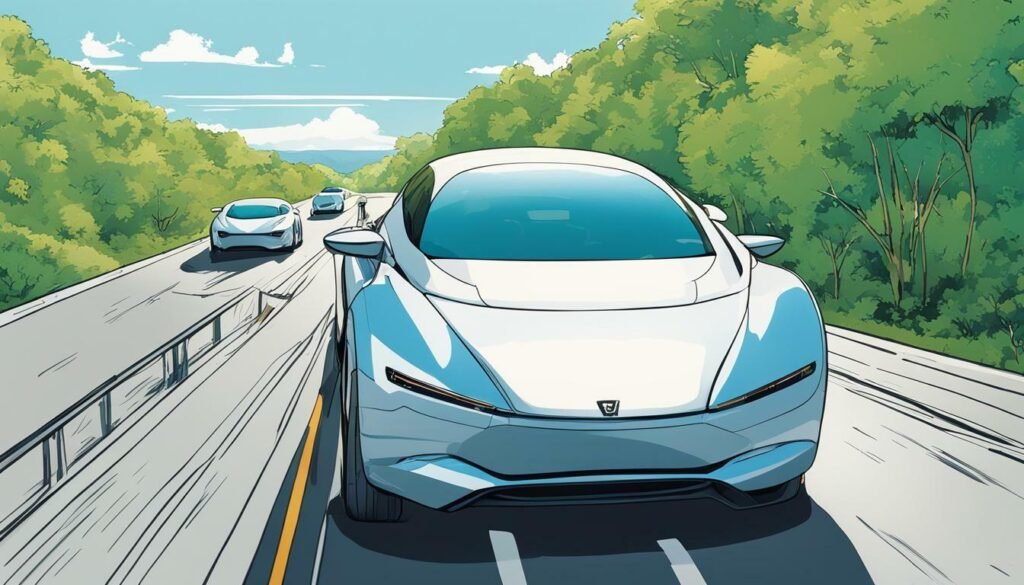
AI in Transportation: A Game-Changer
Artificial intelligence (AI) is set to transform the automotive industry by revolutionizing the way we drive and transport goods. With AI-powered systems and algorithms, transportation is becoming safer, more efficient, and more convenient than ever before.
The automotive industry is already experiencing the benefits of AI, with self-driving cars improving road safety and reducing traffic congestion. In addition to autonomous vehicles, AI is also transforming various aspects of transportation, including navigation, traffic management, and vehicle performance.
| AI in Navigation: | Using AI-powered navigation systems, vehicles can optimize their routes, ensuring the most efficient and time-saving path to the destination. |
|---|---|
| AI in Traffic Management: | AI can help reduce traffic congestion by predicting traffic patterns, optimizing traffic signals, and providing real-time traffic updates. |
| AI in Vehicle Performance: | AI-powered algorithms can optimize fuel consumption, engine performance, and vehicle maintenance, lowering operating costs and minimizing downtime. |
These advancements in transportation technology are set to revolutionize the way we travel, making it safer and more sustainable. As AI continues to evolve, we can expect to see even more advancements in vehicle connectivity and smart infrastructure.
With the increasing demand for sustainable transportation, the automotive industry is turning to AI to help reduce carbon emissions. AI-powered vehicles can optimize their routes, reducing fuel consumption and minimizing the carbon footprint of transportation. As a result, AI is becoming a critical component of efforts to address climate change.

Moreover, AI is driving innovation in the automotive industry by enabling the development of new, innovative products and services. From ride-sharing services to delivery drones, AI is opening up new possibilities for transportation and logistics.
Overall, the role of AI in the transportation industry is growing rapidly, with experts predicting that it will transform the way we travel and transport goods. As AI-powered systems continue to evolve, we can expect to see even more groundbreaking developments in the automotive industry.
Automated Driving Systems: The Technology Behind Self-Driving Cars
In this section, we will delve into the technology behind self-driving cars, specifically automated driving systems. These systems are the foundation of self-driving cars, enabling vehicles to navigate and make decisions autonomously.
Automated driving systems are made up of various components and sensors that work together to create a comprehensive view of the vehicle’s surroundings. The main components of automated driving systems include:
| Component | Description |
|---|---|
| Cameras | Provide visual data to the vehicle’s computer system, allowing it to recognize objects, pedestrians, and other vehicles. |
| Lidar | Uses laser sensors to create a 3D map of the vehicle’s environment, detecting obstacles and calculating distances. |
| Radar | Uses radio waves to detect and track the movement of other vehicles, providing a more accurate view of the vehicle’s surroundings. |
| GPS | Provides the vehicle’s location and allows it to navigate to a destination. |
| Computer System | Processes the data collected from the vehicle’s sensors and makes decisions about driving, such as steering, accelerating, and braking. |
These components work together to create a detailed map of the vehicle’s surroundings, allowing it to navigate and make decisions like a human driver. Advanced algorithms and machine learning techniques are used to interpret the data and make decisions in real-time.
The development of automated driving systems is an essential part of the AI revolution in transportation. These systems have the potential to transform the way we travel, making it safer, more efficient, and more convenient than ever before.
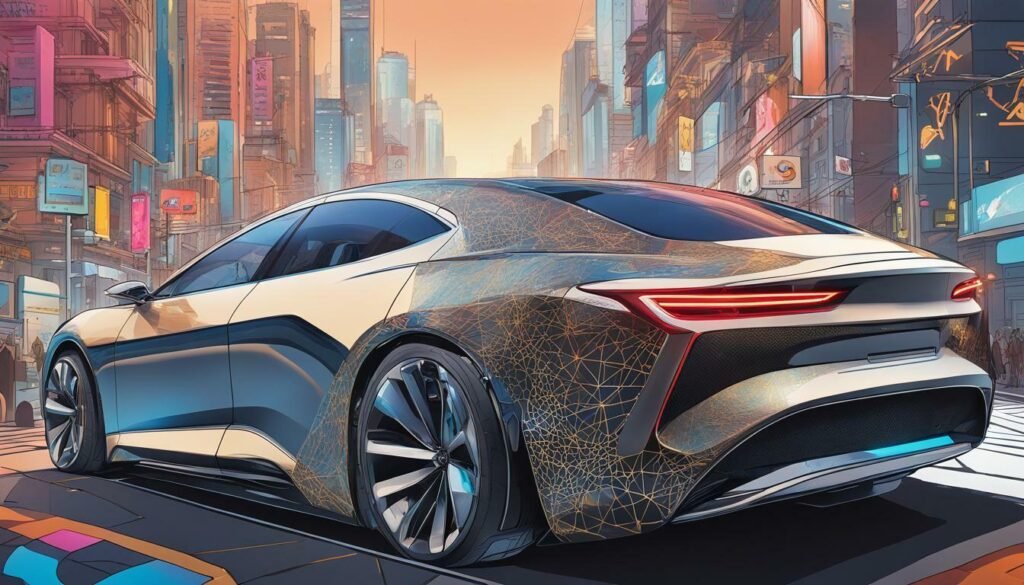
As the technology continues to advance, we can expect to see further improvements in automated driving systems, including increased accuracy and reliability, expanded capabilities, and more widespread adoption. The future of transportation is exciting, and automated driving systems are at the forefront of this emerging technology.
The Benefits of Self-Driving Cars
Self-driving cars are poised to transform the future of transportation. With advanced AI-powered technology, they offer numerous benefits compared to traditional vehicles. Here are some of the potential advantages of self-driving cars:
- Improved Safety: Self-driving cars have the potential to significantly reduce accidents on the road. With advanced sensors and algorithms, they can detect and avoid potential collisions more effectively than human drivers.
- Enhanced Traffic Flow: Self-driving cars can communicate with each other and with traffic management systems, optimizing routes and reducing congestion on the road.
- Increased Accessibility: Self-driving cars can provide an alternative mode of transportation for those who cannot drive, such as the elderly or those with disabilities. They can also enhance mobility for those living in areas with limited public transportation options.
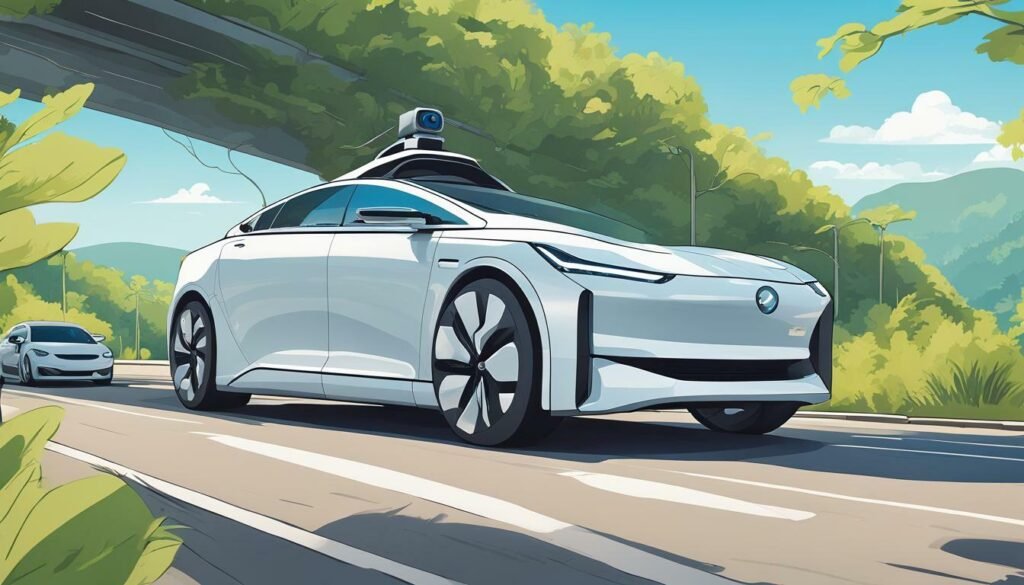
Additionally, self-driving cars have the potential to revolutionize the way we travel, making it more efficient and convenient. Instead of spending time behind the wheel, passengers can use their time for work or leisure activities. Self-driving cars can also reduce the need for parking spaces, as they can drop off and pick up passengers before finding a parking spot.
The future of transportation is bright with the possibilities that self-driving cars offer. As technology continues to evolve and improve, we can expect to see these benefits realized, transforming the way we move and shaping the future of transportation as we know it.
Challenges and Considerations
While the potential benefits of self-driving cars and the broader AI revolution in transportation are exciting, there are also several challenges and considerations to keep in mind.
Safety: One of the primary concerns with self-driving cars is ensuring their safety. While proponents argue that autonomous vehicles will ultimately reduce accidents, there have been several high-profile incidents involving self-driving cars. It’s crucial that manufacturers and regulators work together to establish safety guidelines and protocols to mitigate the risks.
Regulations: There’s also a need for clear regulations and guidelines regarding the operation of self-driving cars. As this technology continues to evolve, policymakers will need to address issues related to liability, insurance, and licensing to ensure that self-driving cars can be operated safely and legally on public roads.
Public Acceptance: The success of self-driving cars ultimately depends on public acceptance. While studies indicate that a majority of Americans are open to the idea of autonomous vehicles, there’s still a significant contingent of people who remain skeptical. It’s crucial that the industry works to address public concerns, promote transparency, and build trust with consumers.
Ethical Considerations
The development and deployment of self-driving cars also raises several ethical considerations. For example, if a self-driving car is faced with an unavoidable accident, how should it decide which course of action to take? There are also concerns about the potential displacement of workers in the transportation industry and the impact of autonomous vehicles on vulnerable populations, such as the elderly and disabled.
As such, it’s essential that the industry takes a thoughtful and measured approach to the development and deployment of self-driving cars. This includes engaging in ethical discussions and debates, working closely with policymakers and regulators, and ensuring that this technology is used in a responsible and ethical manner.

In the next section, we’ll explore the potential impact of AI on public transportation and how it can revolutionize the way we move.
AI and the Future of Public Transportation
As we continue to explore the impact of artificial intelligence on transportation, we must not overlook the potential role it can play in optimizing public transportation systems. With the emergence of new technologies and innovations, we have an opportunity to transform the way we commute and travel in our daily lives.
By integrating AI-powered algorithms and systems, public transportation can be optimized for efficiency and user experience. One potential application is the optimization of routes and scheduling, which can reduce wait times and increase accessibility for riders. This can be particularly beneficial in densely populated urban areas, where traffic congestion can lead to long commutes and delays.
Furthermore, AI can be used to enhance the safety and security of public transportation systems. Real-time monitoring and analysis of traffic patterns and passenger behavior can help prevent accidents and identify potential security threats. In addition, AI-powered sensors and cameras can detect and alert transportation officials of maintenance issues, preventing equipment failure and minimizing disruptions in service.
Another potential use of AI in public transportation is the development of personalized, on-demand services. With the rise of ride-sharing platforms and other transportation alternatives, public transportation must adapt to remain competitive. By integrating AI-powered systems, public transportation can offer personalized services that cater to the unique needs and preferences of individual riders, such as route customization and preferred seating arrangements.
The potential for AI in public transportation is vast and exciting. As this emerging technology continues to advance, we can expect to see further integration in public transportation systems, ultimately transforming the way we move and commute.
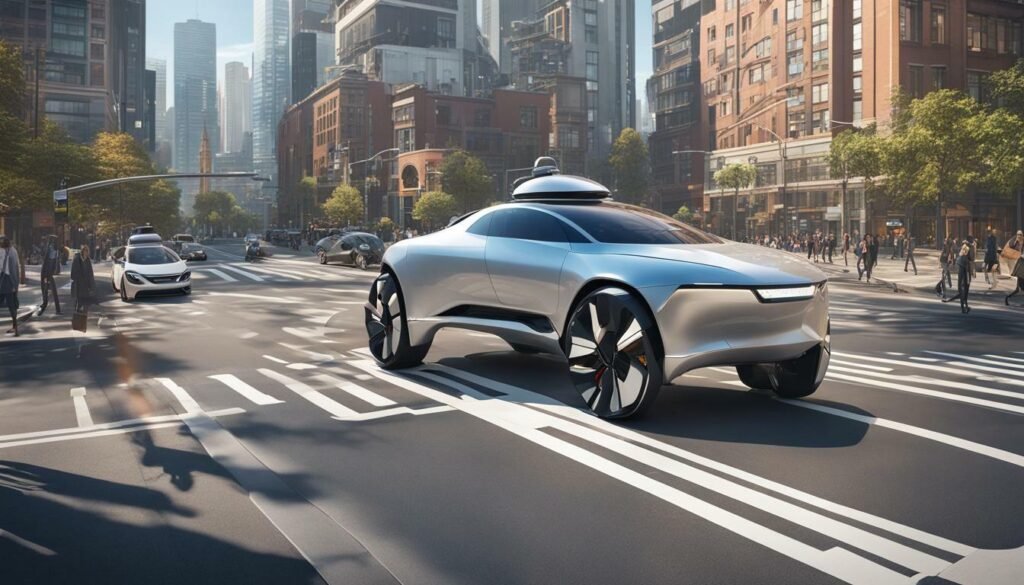
As we continue to see the development of AI in transportation, the opportunities for optimization and innovation are endless. From self-driving cars to public transportation systems, AI is poised to play a critical role in the future of transportation and the automotive industry. As we look to the future, we must continue to explore and embrace the potential of AI, while also addressing the challenges and considerations that come with this revolutionary technology.
The Role of AI in Freight and Delivery Services
In addition to transforming personal transportation, self-driving cars and AI are also poised to revolutionize the world of freight and delivery services. With the advanced transportation technology powered by AI, logistics and delivery operations can be optimized for greater efficiency and accuracy.
AI-powered algorithms and systems are capable of analyzing vast amounts of data to determine the most efficient and cost-effective routes for delivery vehicles. This can result in significant cost savings for companies and faster delivery times for customers.
With the integration of AI, delivery vehicles can also be equipped with advanced sensors and cameras, allowing for real-time monitoring of traffic conditions and delivery status. This can help to minimize delays and ensure that packages arrive at their intended destinations on time.
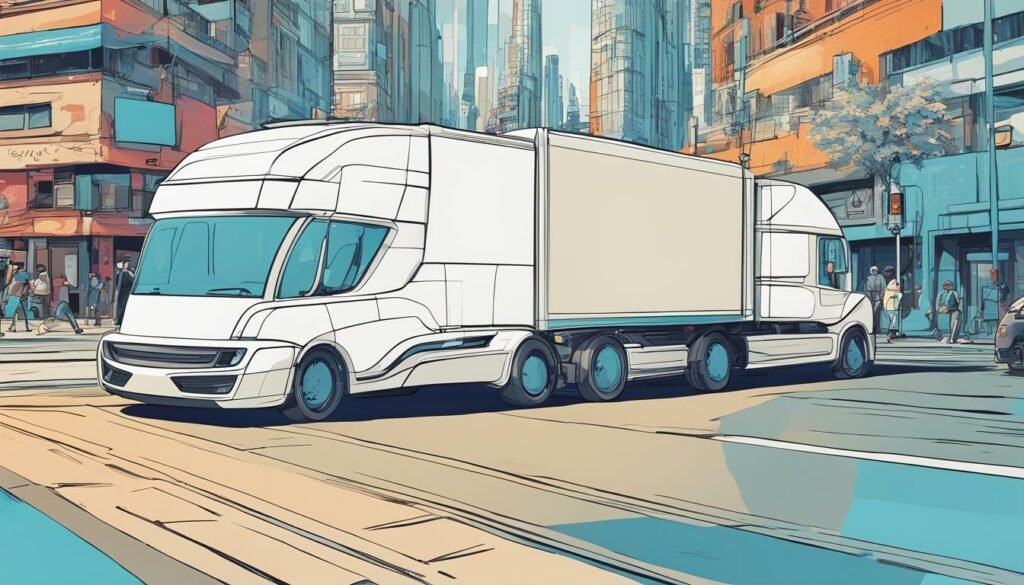
Furthermore, AI can also enable predictive maintenance of delivery vehicles, alerting companies to potential issues with vehicles before they become major problems. This can help to reduce downtime and ensure that delivery operations run smoothly.
Overall, the use of AI in freight and delivery services has the potential to revolutionize the industry, creating a more efficient and reliable system for the delivery of goods. As technology continues to advance, we can expect to see even greater integration of AI in the world of transportation and logistics.
AI Ethics and Regulations in Self-Driving Cars
As we delve deeper into the world of self-driving cars and the AI revolution in transportation, it is crucial to consider the ethical and regulatory implications of this emerging technology. We need to ensure that these vehicles are safe, reliable, and secure for both passengers and pedestrians.
One major concern is the issue of liability in the event of accidents involving self-driving cars. Who is responsible if an autonomous vehicle causes an accident? Is it the passenger, the manufacturer, or the software developer?
Another consideration is the potential loss of jobs in the transportation industry, as self-driving technology could replace human drivers. It is important to find ways to protect the livelihoods of those who may be impacted by this shift in the industry.
Furthermore, there are ethical concerns regarding the use of AI in decision-making. For example, in the event of an unavoidable accident, how will an AI-powered system decide between protecting the passenger or minimizing harm to pedestrians?
Regulations must also be established to ensure that self-driving cars are developed and deployed responsibly and in compliance with safety standards. It is important for governments and regulatory bodies to work closely with manufacturers and technology developers to establish these guidelines.
Overall, as the development of self-driving cars and AI in transportation continues to progress, it is crucial to address these ethical and regulatory considerations to ensure the safe and responsible integration of this technology into our daily lives.
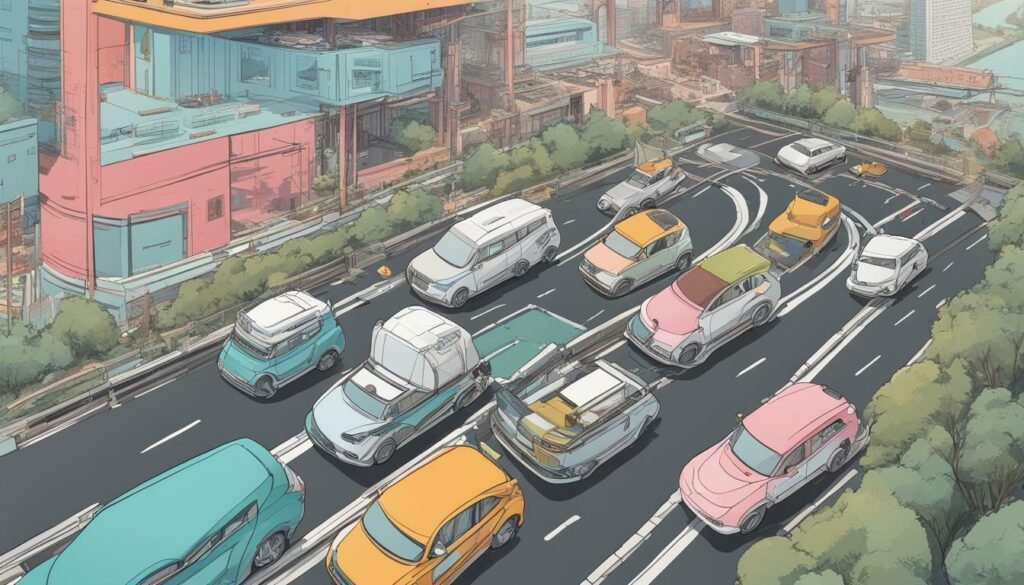
Future Implications and Possibilities
As we have explored throughout this article, self-driving cars and AI in transportation have immense potential to shape the future of transportation. As technology continues to advance, we can expect to see further integration of AI in vehicles and transportation systems, revolutionizing the way we move and creating a safer, more efficient future.
One of the most exciting possibilities for the future of self-driving cars is the integration of AI with other emerging technologies, such as smart infrastructure and vehicle connectivity. This has the potential to create seamless, optimized transportation systems that include everything from traffic management and navigation to ride-sharing and public transportation.
Another area of potential growth is in the development of self-driving trucks for commercial purposes. These vehicles can potentially improve the efficiency of freight and delivery services by optimizing routes and reducing the need for human drivers, which can lead to cost savings and increased safety.

However, as with any emerging technology, there are challenges and considerations that must be addressed. This includes ethical and regulatory considerations, as well as concerns surrounding safety and public acceptance.
Despite these challenges, we firmly believe that the future of self-driving cars and AI in transportation is full of opportunities. By continuing to invest in research and development, and by working collaboratively across industries and sectors, we can ensure that this technology is developed in a safe, responsible, and sustainable way. The future of transportation is exciting, and we look forward to being a part of it.
The Road Ahead: Challenges and Opportunities
As we look to the future of self-driving cars and the AI revolution in transportation, we must also consider the challenges and opportunities that lie ahead. While the potential benefits of this technology are significant, there are also significant hurdles to overcome.
The Challenges
One major challenge is ensuring the safety of self-driving cars. While the technology has come a long way, there is still a risk of accidents and malfunctions. There is also the issue of public acceptance, as many people may be hesitant to trust their lives to autonomous vehicles.
Another challenge is the need for regulatory frameworks to ensure that self-driving cars are developed and deployed in a responsible manner. There is currently no unified set of regulations governing self-driving cars, which could make it difficult to ensure their safety and reliability.
Finally, there is the issue of ethical considerations. As self-driving cars become more prevalent, we must consider questions such as who is responsible in the event of an accident, and how to balance the interests of different stakeholders.
The Opportunities
Despite these challenges, the opportunities presented by self-driving cars and the AI revolution in transportation are significant.
One major opportunity is the potential to reduce accidents and improve safety on the roads. With autonomous vehicles, there is the potential for a significant reduction in the number of accidents caused by human error.
There is also the potential to improve traffic flow and reduce congestion. With self-driving cars, vehicles can communicate with one another to optimize routes and reduce bottlenecks.
Finally, self-driving cars have the potential to enhance accessibility for those who are unable to drive, such as the elderly or disabled. This could greatly improve their quality of life and increase their independence.
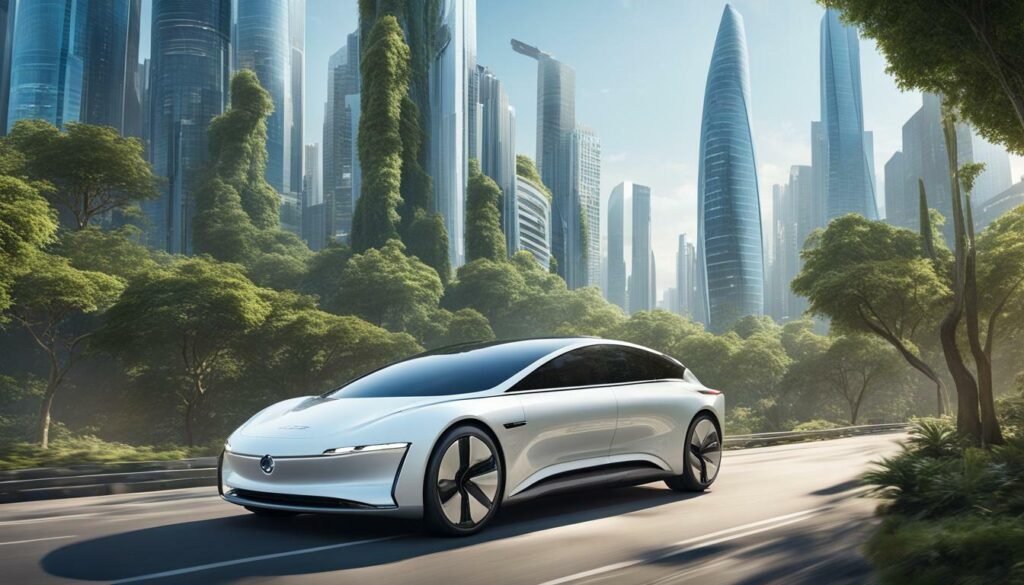
As we navigate the challenges and opportunities of self-driving cars and the AI revolution in transportation, it is clear that this technology has the potential to transform the way we move. With continued research, development, and collaboration, we can fully realize the potential of this technology and build a safer, more efficient future for all.
Conclusion
In conclusion, we believe that the future of self-driving cars and AI in transportation is promising. The integration of AI in vehicles and transportation systems has the potential to revolutionize the way we move and shape a safer, more efficient future. However, as with all emerging technologies, there are challenges and considerations that must be addressed.
Safety, regulation, and ethical considerations must be at the forefront of the development and deployment of self-driving technology. Guidelines and regulations must be established to ensure the safe and responsible use of this technology. Continued research and development, along with collaboration between industry leaders and regulatory bodies, are crucial to fully realizing the potential of self-driving cars and AI in transportation.
As we look ahead, the possibilities for the future of transportation are vast. Advancements in vehicle connectivity, smart infrastructure, and the integration of AI with other emerging technologies suggest that the future of transportation will be vastly different from what we know today. We look forward to witnessing the continued evolution of self-driving cars and AI in transportation, and the opportunities and challenges that lie ahead.
Thank you for joining us on this journey exploring the future of self-driving cars and AI in transportation.
FAQ
Q: What are self-driving cars?
A: Self-driving cars, also known as autonomous vehicles, are vehicles equipped with advanced technology that allows them to navigate and operate without human intervention. These cars use a combination of sensors, cameras, radar, and artificial intelligence to perceive and interpret their surroundings, make decisions, and control their movements.
Q: How does artificial intelligence (AI) contribute to self-driving cars?
A: AI plays a crucial role in self-driving cars by enabling the vehicles to process and analyze the vast amount of data collected from their sensors. AI algorithms allow the cars to interpret this data, recognize objects and obstacles, understand traffic patterns, and make real-time decisions based on the information received. AI also helps in improving the overall safety, efficiency, and performance of self-driving cars.
Q: What are the potential benefits of self-driving cars?
A: Self-driving cars have the potential to bring numerous benefits to our society. They can significantly reduce traffic accidents caused by human error, improve traffic flow, and reduce congestion. Self-driving cars can also enhance accessibility, providing transportation options for people who are unable to drive, such as the elderly or disabled. Additionally, they have the potential to make transportation more efficient, reduce fuel consumption, and minimize the environmental impact of transportation.
Q: Are self-driving cars safe?
A: Ensuring the safety of self-driving cars is a top priority for manufacturers and regulators. Self-driving cars undergo extensive testing and development to ensure their safe operation. However, there are still challenges to overcome, and it is important to establish regulations and guidelines to govern the deployment and operation of self-driving cars. Ongoing research and collaboration are key to addressing safety concerns and ensuring the responsible development and deployment of self-driving technology.
Q: What are the challenges facing self-driving cars?
A: There are several challenges to overcome in the adoption of self-driving cars. Safety remains a concern, as well as the development of regulations and legal frameworks to govern autonomous vehicles. Public acceptance and trust in self-driving technology are also important factors to consider. Additionally, there may be job displacement in certain industries, such as transportation and logistics, as self-driving technology becomes more prevalent.
Q: How will self-driving cars impact the transportation industry?
A: Self-driving cars have the potential to revolutionize the transportation industry. They can improve the efficiency and reliability of transportation, reduce congestion, and enable new business models, such as ride-sharing and on-demand transportation services. The adoption of self-driving cars may also lead to changes in urban planning and infrastructure development, as cities adapt to accommodate autonomous vehicles.
Q: What is the future of self-driving cars and AI in transportation?
A: The future of self-driving cars and AI in transportation holds immense promise and potential. As technology continues to advance, we can expect further integration of AI in vehicles and transportation systems. This integration will bring advancements in vehicle connectivity, smart infrastructure, and the integration of AI with other emerging technologies. The road ahead presents both challenges and opportunities, and continued research, development, and collaboration are vital to fully realize the potential of this technology.

